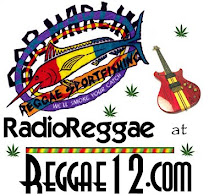
The following is from the booklet included with the box set, "This Is Reggae Music: The Golden Era" (http://www.amazon.com/dp/B00064LOV4?tag=sistamaureesrast&camp=14573&creative=327641&linkCode=as1&creativeASIN=B00064LOV4&adid=1PDH24Y48547AAWJJB4H&)
Nineteen-fifty-seven. The United States was in the grip of Calypsomania. and some were even going so far as. to predict that the calypso would soon eclipse Rock n’ Roll. Before it all blew over, Robert Mitchum, Maya Angelou the Norman Luboff Choir, and many others had made Calypso albums. Calypso, of course, was Trinidadian, but the two big Calypso era hits, "Banana Boat Song” and "Jamaican Farewell," were Jamaican; so Calypso was reckoned to come from Jamaica.
As the craze subsided, a Billboard magazine reporter sniffed out a free vacation and went to Kingston to see what the Jamaicans liked. To his surprise, it was rare R&B; not Calypso. "Local observers,” he wrote, "note that the local musical product is developing into a hybrid in which the strongest elements are calypso and rock & roll.” Understandably, the writer missed the pan-African underground springing up in Kingston’s slums, but ten years later pan-Africanism would merge with American R&B and Caribbean music in those same back alleys to forever change global music.
Around 1960, Ska evolved from Jamaican R&B. The Billboard article mentioned that Fats Domino was the most in demand artist on the island, so it was probably no coincidence that Ska arrived on the heels of three influential American releases: Fats Domino's "Be My Guest" (1959), Wilbert Harrison's "Kansas City" (also 1959), and Rosco Gordon's "Surely I Love You" (1960). All three worked the offbeat for all it was worth. Bill Black's Combo figured somewhere in the equation, too. Black's greasy instrumental hits featured a hugely upfront four-to-the-bar beat, and sold so well in Jamaica that he toured there - to the surprise of many who found out that he was white.
It's axiomatic that there are no facts in Jamaica , only opinions, so no one knows what "Ska" means and no one agrees on what was the first Ska record. But around 1960, Jamaican drummers began hitting the second and fourth beats in unison with the piano and guitar, while the bass played walking quarter-notes. That was Ska. Local musicians called it "Upside-down R&B." It had an underground following in England, but not in the United States. One giant Ska hit, Millie's "My Boy Lollipop," rode into the charts on the back of the British Invasion, and when it exited, Ska exited along with it.
'Whatever was happening in Jamaica didn't go away when Millie hit the remainder bins. The local industry was building inexorably. The 1951 Billboard article mentioned that there was just one record press on the island (not one pressing plant, but one press) although local entrepreneur Ken Khouri claimed to have two presses running by 1954· Around 1957; Khouri built a studio, and Dada Tawari opened the Caribbean Record Company with mastering facilities. From that point, the Jamaican industry was self-sufficient, albeit geared toward faux calypso LP’s for tourists.
"Alongside the tiny manufacturing industry, there were open-air deejays known as sound systems. “A cliff face of speaker boxes, each big enough to raise a family in, powered by amplification of intercontinental capability," is the way journalist Lloyd Bradley described them. There was life-and-death competition among the system operators to source the rarest American R&B and the best technology.
The systems were essential to the dissemination of music because the island’s two radio stations, RJR (launched in 1950 as a branch of British Rediffusion) and the government's JBC (which started in 1959), played it as safe as the BBC mothership; The payoff for the sound system operators, came in prestige and drink sales. Three sound system men ruled the early Sixties: Duke Reid, Clement "Coxsone" Dodd, and Prince Buster. Both Reid and Dodd began operating from family liquor stores. The idea of producing records occurred first to Reid, who cut some instrumentals at Khouri's studio circa 1957. Around the same time, Dodd realized that Jamaicans didn't like rock 'n' roll, and began recording the kind of R&B that the Americans were no longer producing. In 1958, Chris Blackwell launched R&B Records (the precursor of Island ) and future Jamaican Prime Minister Edward Seaga launched WIRL (West Indies Records Ltd.).
From the booklet included with the four CD box set, "This Is Reggae Music: The Golden Era" (http://www.amazon.com/dp/B00064LOV4?tag=sistamaureesrast&camp=14573&creative=327641&linkCode=as1&creativeASIN=B00064LOV4&adid=1PDH24Y48547AAWJJB4H&)


No comments:
Post a Comment